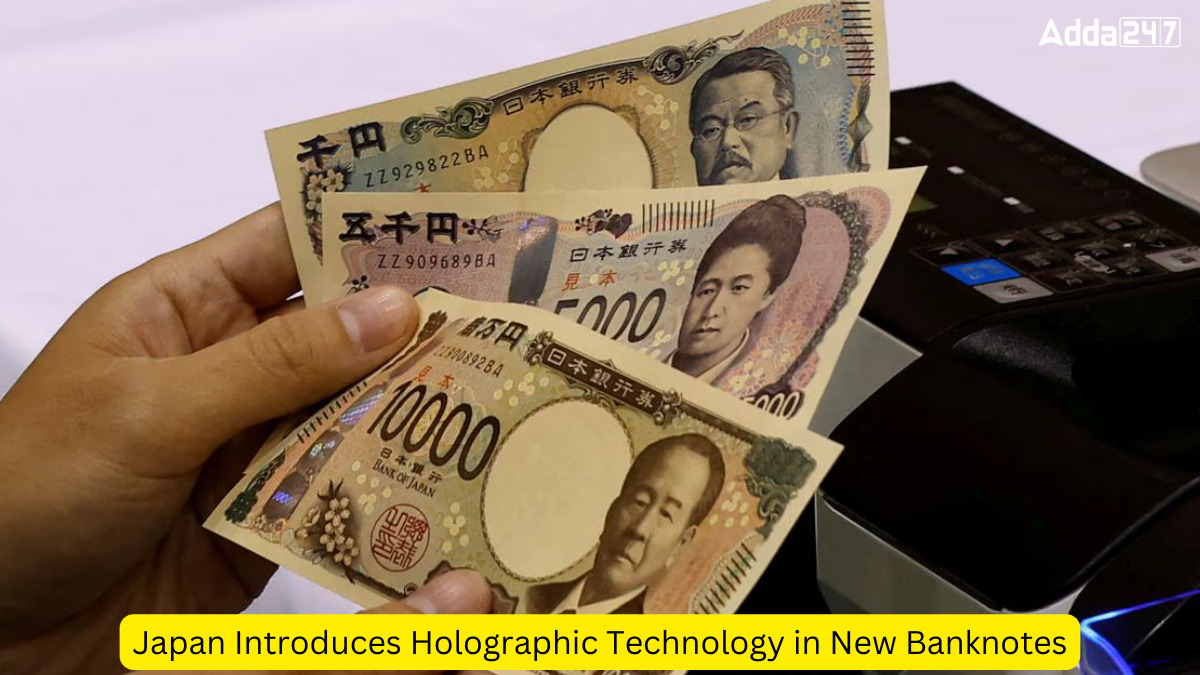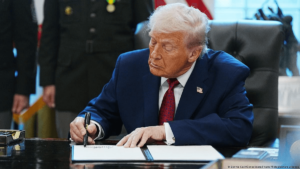On July 3, Japan will introduce new banknotes featuring what it claims to be the world’s pioneering use of advanced holography. This technology creates the illusion of historic figures’ portraits rotating in 3D on the bills, serving as a key anti-counterfeit measure. This marks the first redesign of the banknotes in 20 years.
New series of banknotes
Japan is set to unveil a new series of banknotes, marking the first significant redesign in two decades. This update to the ¥10,000, ¥5,000, and ¥1,000 notes incorporates advanced anti-counterfeiting technologies and features prominent historical figures. Since the country issued its first banknote in 1885, there have been 53 different designs. This latest update, effective from July 3, comes as a measure to enhance security and usability amid evolving technological advancements.
What are the new features of the redesigned banknotes?
The upcoming banknotes introduce several innovative features equipped with advanced security features to prevent counterfeiting. One of the most notable advancements is the incorporation of cutting-edge holographic technology, which creates a three-dimensional effect. These include:
- Three-dimensional holographic stripes on the ¥10,000 and ¥5,000 notes that display the portraits from different angles when tilted. The ¥1,000 bill also includes a similar holographic patch at the bottom left corner.
- Enlarged Arabic numerals replacing the previous kanji characters for easier recognition of the face value by people of all ages and nationalities.
- Tactile marks to help visually impaired individuals identify the denominations by touch.
- Intaglio printing and watermarks for enhanced authenticity.
In a groundbreaking move, Japan claims to be the first country to utilise holography that creates a 3D rotating effect on the portraits, significantly elevating the notes’ security features. These features are part of Japan’s ongoing efforts to combat counterfeiting, which, despite a significant decline in recent years, remains a concern. In 2020, there were 2,693 counterfeit cases reported, whereas only 681 cases were reported in 2023.
Who are the historical figures featured on the new banknotes?
The new banknotes will prominently feature three influential figures from Japanese history, each chosen for their significant contributions to the nation.
About ¥10,000 note
The ¥10,000 note will feature Eiichi Shibusawa (1840-1931), known as the “father of Japanese capitalism.” Shibusawa played a pivotal role in the modernisation of Japan’s economy during the Meiji Era. He was instrumental in establishing the First National Bank in 1873 and founded over 500 companies, including notable names like Sapporo Brewery and Tokyo’s Imperial Hotel. On the back of the ¥10,000 note, the iconic red-brick building of Tokyo Station’s Marunouchi Building is depicted, symbolising the progress and modernisation Shibusawa championed.
About ¥5,000 note
Umeko Tsuda (1864-1929) will grace the ¥5,000 note. Tsuda was a pioneering educator who dedicated her life to improving educational opportunities for women. After studying in the United States, she founded Tsuda University, which remains one of Japan’s most prestigious institutions for women. The reverse side of the ¥5,000 note features Japanese wisteria flowers, a symbol of the beauty and persistence of Tsuda’s efforts to uplift women’s status in Japanese society.
¥1,000 note
The ¥1,000 note will honour Shibasaburo Kitasato (1853-1931), a celebrated bacteriologist known for his contributions to modern medicine. Kitasato co-discovered an antitoxin for diphtheria and was a key figure in the early development of Japanese medical science. The back of the ¥1,000 note showcases “The Great Wave off Kanagawa”, a famous woodblock print by ukiyo-e artist Katsushika Hokusai, symbolising Kitasato’s impact on global science and medicine.
How will the new banknotes be made available?
The new banknotes will be made available starting Wednesday, July 3, 2024. Initially, they will be distributed to financial institutions, which will then make them available to the public through ATMs and cashier windows. By the end of March 2025, nearly 7.5 billion new banknotes are expected to be in circulation, with a total of 5 billion banknotes prepared by the end of March 2024. The old banknotes will remain valid for transactions even as the new ones enter circulation.
Important takeaways for all competitive exams
- Capital of Japan: Tokyo
- Government in Japan: Democracy, Unitary state, Parliamentary system, Constitutional monarchy
- Prime minister: Fumio Kishida
- Area: 377,973 km²
- Currency: Japanese yen (¥)




 Keyi Panyor to Become India’s First Bio-...
Keyi Panyor to Become India’s First Bio-...
 U.S. Withdraws from 66 International Org...
U.S. Withdraws from 66 International Org...
 UN Declares 2026 International Year for ...
UN Declares 2026 International Year for ...







